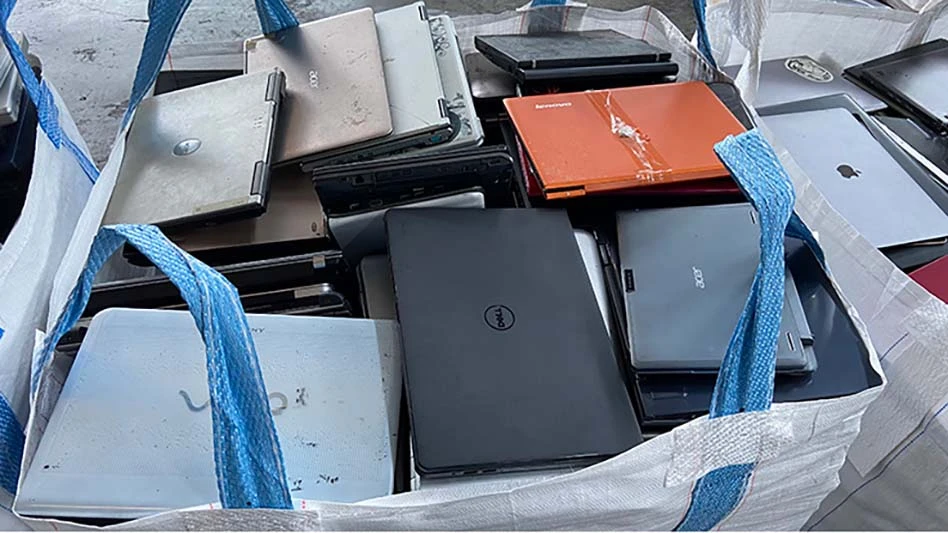
Recycling Today archives
A paper published by researchers at Singapore’s Nanyang Technological University (NTU) focuses on a method to remove brominated flame retardants (BFRs) from plastic before it is recycled.
BFRs are considered a toxic compound but are found in commonly used and recycled items, including laptops, keyboards and smartphones. When landfilled, BFRs can leach out from discarded electronics and if a recycling process involves heating plastic, that also can release the toxic compounds.
NTU says a research team led by Associate Professor Lee Jong-Min at its School of Chemistry, Chemical Engineering and Biotechnology has come up with a way to make BFR-contaminated plastic recycling safer.
Using a mixture of 1-propanol and heptane, the process dissolves and removes BFRs from acrylonitrile butadiene styrene (ABS), a resin commonly used in the casings of keyboards and laptops.
According to NTU, the solvents dissolved predominantly BFRs, enabling the researchers to recover more than 80 percent of the plastic after removal of the BFRs.
“The properties of the plastic were also unchanged,” the university says.
The project’s findings were published in a paper titled “Enhanced extraction of brominated flame retardants from e-waste plastics” in Chemical Engineering Journal and highlighted in Pushing Frontiers, NTU’s research and innovation magazine.
Last year, researchers at NTU announced their development of a way to convert plastic scrap into a scaffolding to serve as hosts for tumors in medical laboratory applications.
Latest from Recycling Today
- Phoenix Technologies closes Ohio rPET facility
- EPA selects 2 governments in Pennsylvania to receive recycling, waste grants
- NWRA Florida Chapter announces 2025 Legislative Champion Awards
- Goldman Sachs Research: Copper prices to decline in 2026
- Tomra opens London RVM showroom
- Ball Corp. makes European investment
- Harbor Logistics adds business development executive
- Emerald Packaging replaces more than 1M pounds of virgin plastic





